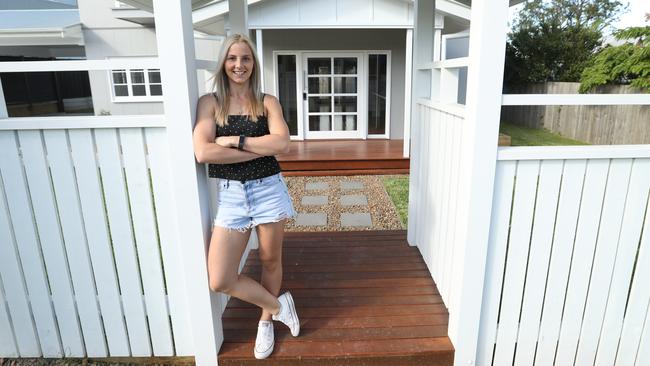Ray of hope as house price erosion slows
The pace of falling house prices has eased in a tentative sign the downturn is “losing some steam”.

The pace of falling house prices has eased, with the 0.6 per cent drop in March the smallest fall since October.
However, the malaise has widened and year-on-year declines have deepened to the levels seen during the global financial crisis.
Researcher CoreLogic found prices fell in six of the eight capitals and five of the seven “rest of state” markets during March. Head of research Tim Lawless said there were tentative signs that the downturn was “losing some steam”.
“Although this is a positive development, the outlook for the housing market will continue to be affected by uncertainty related to the federal election, lending policies and, more broadly, domestic economic conditions,” Mr Lawless said.
“No doubt some buyers and sellers are delaying their housing decisions until after the election. However, there is no guarantee certainty will improve post-election, considering the impact of a wind back of negative gearing and halving of the capital gains tax concession is largely unknown.”
Despite an easing in the rate of declines, the year-on-year fall of 6.9 per cent was the worst since the GFC, according to investment bank UBS.
CoreLogic continues to expect Sydney and Melbourne to be hardest hit and has maintained its forecast of an 18 to 20 per cent fall in prices for Sydney from the height of the market in 2017 to the bottom, most likely next year, with Melbourne to closely follow.
Prices in Sydney fell 0.9 per cent for the month and 10.9 per cent for the year, while Melbourne prices were down 0.8 per cent for March and 9.8 per cent for the year.
Brisbane fell 0.6 per cent and 1.3 per cent for the year, Adelaide was down 0.2 per cent but increased 0.8 per cent for the year, Perth fell 0.4 per cent and was down 7.7 per cent annually, and Darwin values fell 0.6 per cent, and 6.8 per cent for the year.
Prices in Hobart were resilient, increasing 0.6 per cent in March and 6 per cent for the year, while Canberra was also in the black, with prices flat during the month but there was a 3.1 per cent lift for the year.
Across the 46 areas analysed by CoreLogic, seven avoided falls, including suburban Hobart and Canberra and regions around Brisbane and Adelaide, while Melbourne’s prestigious inner east saw the biggest value drop over the year — 16.1 per cent — followed by Sydney’s Ryde at 14.7 per cent.
In Sydney and Melbourne the top quartile of the market was hardest hit.
Jennifer and Jack Anderson hope to take advantage of the fall in Brisbane’s house prices as they search for a family home in the inner suburbs.
Ms Anderson said they had been looking sporadically over the past six to 12 months, but were now getting serious.
“The plan is to get a bargain, fingers crossed,” said the 22-year-old finance manager.
Ernst & Young chief economist Jo Masters said the falls were putting more pressure on Australian households when a third already had cost-of-living concerns.
“The broadening of falling house prices presents a challenge to the economy, adding a headwind to households that are already facing low wage growth, record debt and concerns about the cost of the living,” she said.


